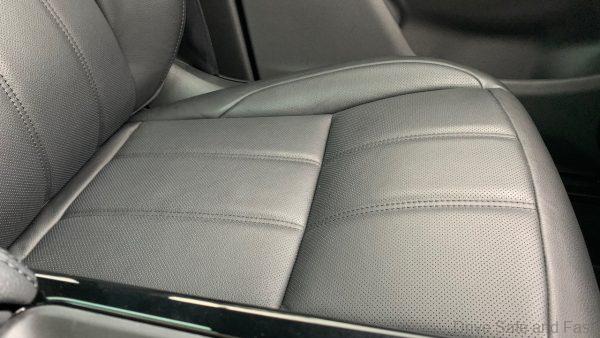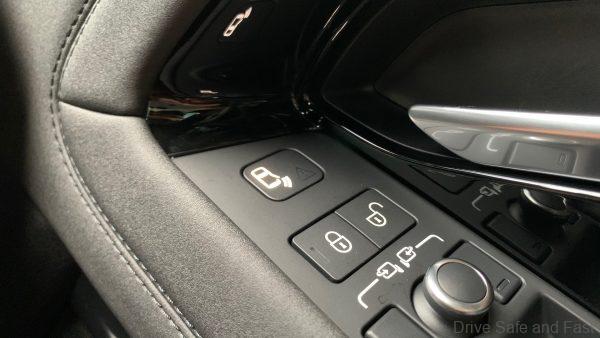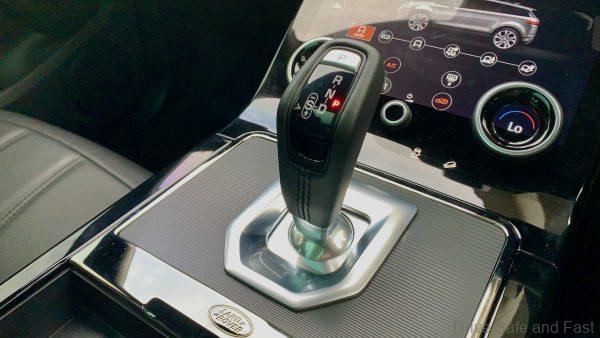2020 Range Rover Evoque P250 R-Dynamic Review
The Range Rover Evoque made waves when it first debuted. But in its second generation, it struggles amongst tough competitors.
Last year, we got to drive two very interesting new Land Rover compact SUVs back to back. One was the Discovery Sport P200, which we liked very much. The other was the Ranger Rover Evoque P250 R-Dynamic, which… has taken us quite some time to get our heads around.

The Range Rover Evoque is not an unfamiliar product to many Malaysians with an eye for the finer things in life. The first generation came out over a decade ago and was immediately hailed as a design icon. It introduced loads of stylistic elements to the compact SUV rulebook. Some have tried to copy it outright, many have taken design inspiration from it, none can deny its influence on modern SUV design.

Not only was the first generation Evoque a breakthrough in design, it was also the first ‘accessible’ Range Rover product. You see, the way the Land Rover brand is structured is such that their general Discovery products are set up to take on the mainstream premium market, while the Range Rover sub-brand takes on the ultra premium market. When the Evoque first debuted in Malaysia, it was the first sub-RM400,000 Range Rover, and Malaysians gobbled it up.

The premium SUV landscape has changed dramatically in the last ten years and the second generation Evoque comes with a myriad of changes to deal with these new challenges. The first is the platform. We praised this new Jaguar Land Rover Premium Transverse Architecture (PTA) in our review of the Discovery Sport. In the Evoque, it’s just as praise-worthy. For a compact SUV, it deals with road imperfections as well as can be expected and Land Rover has done a great job making the Evoque feel more dynamic than your typical Range Rover. Yes, you do get some body roll, but it’s only because this vehicle is also expected to outperform its competitors when it comes to driving off the beaten trail.

Another improvement is to the engine. The Ingenium engines are hardly new at this point, but they certainly weren’t around when the Evoque first debuted in Malaysia. The Evoque P250’s 2.0L turbocharged unit sounds great and is extremely rev happy. It’s a car that feels faster than it actually is. Really, some of its rivals actually beat it on paper, but the way Land Rover have tuned the Evoque just gives you the sensation of a much more exciting product in the bends. The 9-speed ZF-sourced automatic is a quick and smooth shifter, but it’s let down slightly by a tendency to delay the decision to shift by half a second longer than it should. Not a major problem, but certainly noticeable when compared to what’s achieved by some rivals in the same price bracket.

In terms of equipment, the Evoque doesn’t disappoint. The best place to start is with the two 10″ displays in the centre that make up the car’s Touch Pro Duo user interface. The top screen houses controls for infotainment while the bottom screen gives users access to climate controls and Terrain Response 2, which now has an Auto mode.

In typical Range Rover fashion, there’s a bit of theatre here. The door handles extend when the car’s unlocked, then when the engine is turned out, the panoramic sunroof’s blinds retract a little and the infotainment display moves into a preset angle.

There’s an excellent sounding 11-speaker, 380W Meridian sound system to keep the occupants entertained and Apple CarPlay and Android Auto compatibility ensures this is done with ease. A 360-degree camera system makes parking easy to do despite the poorer-than-average visibility presented by the sloping roofline. Other features that are worth mentioning are the 12.3″ digital instrument cluster, the 14-way power-adjustable seats, the power-adjustable steering column and the powered tailgate with hands-free functionality. LED headlights with auto high beams is also standard.

A lot of these features have become expected in the segment, and it’s good to know they’re available here. The only glaring omission is autonomous emergency braking.

The big new feature of the Evoque for this generation does make an appearance here though – ClearSight Ground View. This is a truly unique feature that incorporates an additional ultrawide camera under the car’s front subframe, giving the driver a virtual view of the ground underneath the hood of the car. This is handy for off-roading over jagged rocks or extremely uneven terrain. And it’s also just plain cool.

Finally, we have to talk about design, and here’s where the Evoque has a bit of a problem. Now, it’s a fantastic looking vehicle, we have to start off with that. There’s no denying that the Evoque has the most recognisable shape in its class and no other manufacturer has been able to come close to creating a look that’s as desirable to this day. It’s also worth saying that the 2nd generation Evoque has cleaned up really well. Panel gaps are impossibly tight, surfacing is surgically clean, and Land Rover has an unmatched eye for detail in design still.

The issues we have are maybe a little trivial or subjective. The first is this: everything new about this 2nd generation Evoque’s design is derived from the Range Rover Velar. The second thing is this: the Evoque’s success is tied to the fact that it broke the mould when it came to SUV design ten years ago. If the mould’s already broken, what value does a new Evoque with the same shape as the last one add?

Yes, the new one is a significantly more usable SUV than the first Evoque. The legroom is noticeably better in the rear and the bootspace has increased by 10%, which is significant.

But that doesn’t make it a great option for carrying 4-5 adults, it’s still pretty cramped back there. This design, with the rising beltline and sloping roofline creates an impractical SUV. It was forgivable the first time around because it gave the public something they’d never seen before. This time around it just feels very out of place, especially with the much more practical Discovery Sport available with good enough kit at a much lower price point.

What’s more, changes in the market have also resulted in a price increase. The new Evoque in this form is well over RM470,000. That’s dangerously close to the Mercedes-AMG GLC 43 Coupé 4MATIC’s asking price, and that vehicle’s playing in an entirely different league in terms of performance. The fact that a Porsche Macan base model is available for less money makes the Evoque P250 R-Design feel like a car out of place. Yes, the Range Rover has the upper hand when it comes to off-road performance. But, which customer in Malaysia is taking advantage of this advantage?
And that’s the biggest reason why we’ve struggled to write this review. The Discovery Sport P200 is an excellent product if you’re looking for a compact Land Rover. But this new Evoque… you’ve got to really love the way it looks to spend this kind of money on one. All the excitement for the Land Rover brand seems to be with the Defender and Velar at the moment. Perhaps the Evoque’s time really is over. Or perhaps Jaguar Land Rover Malaysia needs to look at the pricing of these SUVs. They need to be at least RM50,000 cheaper than they currently are to be competitive.
Land Rover Range Rover Evoque P250 Specifications
Engine: Inline-4, 16-Valve, DOHC, Petrol, Turbocharged
Capacity: 1997cc
Max Power: 249hp @ 5,500rpm
Max Torque: 365Nm @ 1,300rpm
Top Speed: 230km/h
0-100km/h: 7.5 seconds
Price: RM475,398




